I'm looking for some good references for learning how to model 2d physics in games. I am not looking for a library to do it for me - I want to think and learn, not blindly use someone else's work.
I've done a good bit of Googling, and while I've found a few tutorials on GameDev, etc., I find their tutorials hard to understand because they are either written poorly, or assume a level of mathematical understanding that I don't yet possess.
For specifics - I'm looking for how to model a top-down 2d game, sort of like a tank combat game - and I want to accurately model (among other things) acceleration and speed, heat buildup of 'components,' collisions between models and level boundaries, and missile-type weapons.
Websites, recommended books, blogs, code examples - all are welcome if they will aid understanding. I'm considering using C# and F# to build my game, so code examples in either of those languages would be great - but don't let language stop you from posting a good link. =)
Edit: I don't mean that I don't understand math - it's more the case that I don't know what I need to know in order to understand the systems involved, and don't really know how to find the resources that will teach me in an understandable way.
